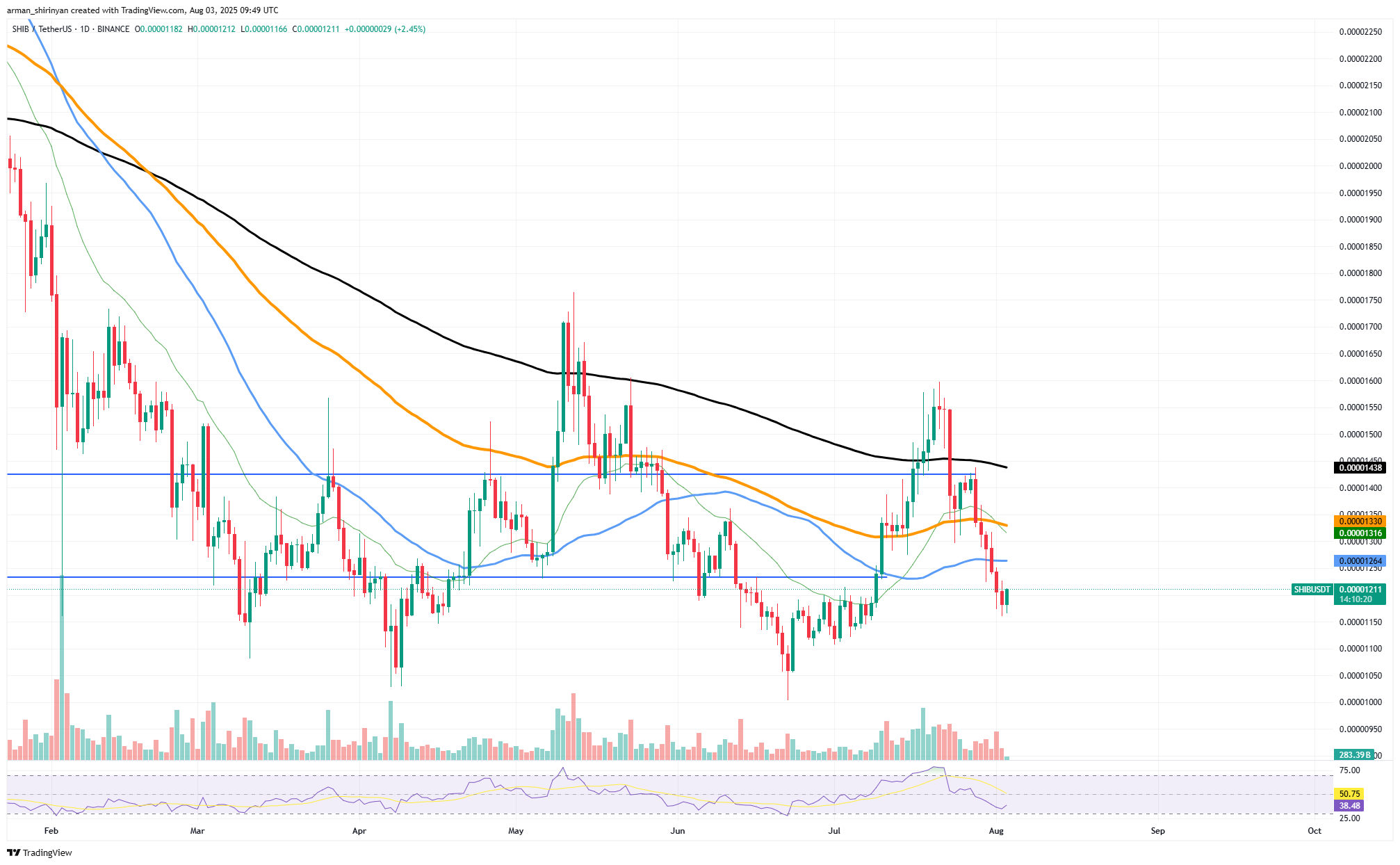Shiba Inu is currently stagnating as on-chain activity falls to negligible levels, with 319.6 billion SHIB transactions representing minimal movement for the token. The RSI indicates oversold conditions, signaling weak momentum and lack of whale engagement.
-
Shiba Inu’s 24-hour transaction volume of 319.6 billion SHIB is minimal relative to its vast supply, indicating stagnation.
-
Recent whale transactions have decreased, contrasting with previous spikes exceeding trillions, reflecting diminished interest.
-
SHIB trades below the 200-day moving average at $0.00001207, with weak volume and no clear catalyst for a rebound.
Shiba Inu stagnates amid oversold signals and low on-chain activity. Discover why SHIB faces weak momentum and what it means for investors today.
Why Is Shiba Inu Stagnating Despite High Transaction Numbers?
Shiba Inu’s current stagnation is evident as the 319.6 billion SHIB transacted in 24 hours barely impacts the token’s massive supply, making it effectively background noise on the blockchain. The token’s large supply dilutes transaction significance, and recent on-chain data confirms a sharp decline in whale activity compared to historical spikes exceeding trillions of SHIB per day.
 SHIB/USDT Chart by TradingView
SHIB/USDT Chart by TradingView
How Does SHIB’s Market Performance Reflect Its On-Chain Activity?
SHIB’s market price currently sits at $0.00001207 after failing to break the 200-day moving average resistance near $0.00001448. This price action aligns with the weak on-chain metrics, where a seven-day high of 3.49 trillion SHIB on July 30 has sharply dropped to the current 319 billion range. This decline indicates speculative bursts lacked sustainable momentum, causing the asset to drift without clear direction.
What Does SHIB’s Oversold Condition Mean for Investors?
The Relative Strength Index (RSI) for SHIB is approaching oversold territory, signaling potential undervaluation but also highlighting weak market conviction. Despite a minor rebound, trading volumes remain low, reflecting a lack of enthusiasm from both retail investors and whales. Without increased active addresses or a confirmed breakout above the 200-day moving average, SHIB remains in a dormant state, awaiting renewed interest or community engagement.
What Are the Key Indicators to Watch for a SHIB Recovery?
Investors should monitor a surge in transaction volume, a rise in active wallet addresses, and a decisive move above the 200-day moving average with strong volume confirmation. These indicators would suggest renewed momentum and potential reversal of the current stagnation. Until then, SHIB’s large transaction figures remain a rounding error, reflecting weakness rather than strength in the market.
Frequently Asked Questions
Why is Shiba Inu’s transaction volume considered insignificant?
Despite 319.6 billion SHIB transacted in 24 hours, this volume is minimal compared to the token’s total supply in the hundreds of trillions, making the activity negligible.
How can I tell if SHIB is recovering from oversold conditions?
Look for increased trading volume, more active addresses, and a sustained price move above the 200-day moving average to confirm a recovery.
Key Takeaways
- Transaction volume is low relative to supply: 319.6 billion SHIB is negligible for a token with hundreds of trillions in circulation.
- Oversold RSI signals weak momentum: SHIB is below key moving averages with little volume support.
- Recovery depends on whale activity and community engagement: Watch for increased transactions and price breakout above resistance.
Conclusion
Shiba Inu currently faces stagnation and oversold conditions, with weak on-chain activity and subdued market interest. Without significant whale movements or community-driven momentum, SHIB is unlikely to break its current dormant phase. Investors should focus on key technical indicators and on-chain metrics for signs of a potential rebound. COINOTAG will continue monitoring developments to provide timely updates.




